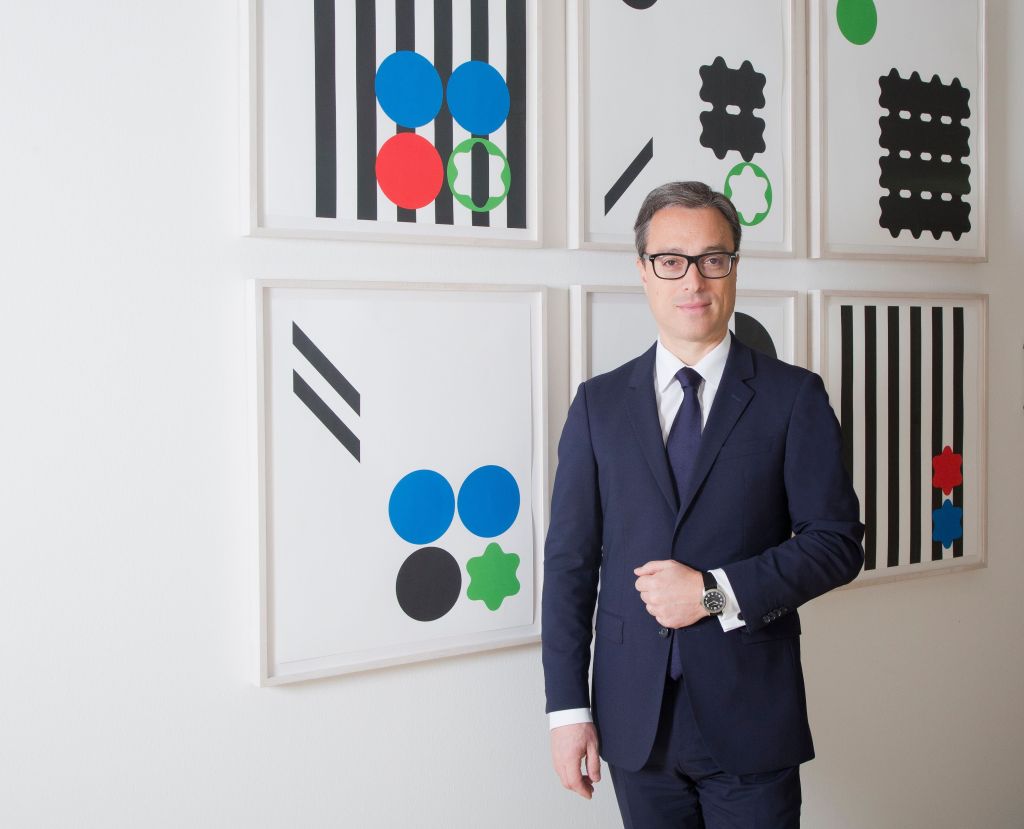Montblanc has long been known for writing instruments, but its recent – and somewhat subtle – pivot into large leather goods is a reflection of the company’s journey from luxury to lifestyle, CEO Nicolas Baretzki says.

Since its inception in 1906, Montblanc has been widely known for its eclectic line of collectible luxury writing instruments. Most recently, there was the Homage to Brothers Grimm, the Homage to Victoria and Albert – even the Enzo Ferrari limited edition pen. Then there are its luxury timepieces.
In the last 25 years, the company has also made small, giftable leather goods a part of its business.
But in the last year or so, the company has made a subtle blink-and-you’ll-miss-it shift away from being a luxury business company to a luxury business and lifestyle company. This has been reflected in a few ways, its CEO Nicolas Baretzki says.
First, through the introduction of larger leather goods, and second, with the hiring of a creative director in March this year, Marco Tomasetta (who indeed led this charge into large leather goods).
“My first year was one of discovery, inspiration, and reinvention, immersing myself in the Montblanc archive to understand the origins and the evolution of the Montblanc brand and its design identity,” Tomasetta says.
“I was inspired by its story of innovation and the significant role the Maison has played in the history of the culture of writing, and culture at large as well.
“I set myself the goal of leaning into the iconic status of Montblanc and pieces like the Meisterstück to reimagine its design codes, turning such a significant heritage into something bold, new, and surprising, yet truly differentiated from any other luxury brand.”
This isn’t a radical change, Baretzki says, sitting in Crown Resorts’ new Barangaroo location on a recent trip to Australia (in fact his first, he says).
“I think it’s a nice evolution of what Montblanc is about as a global luxury business.”
Now, Baretzki says the company has three important pillars, which all offer its customers a different entry point into the luxury world: watches, writing and leather.
Statista values the worldwide luxury leather goods market at US$66 billion, with a projected CAGR of 6.08% annually between now and 2027. The key vendors in the market are Kering SA (the French-based multinational behind brands like Gucci, Balenciaga, Bottega Veneta and YSL) Hermes and Prada.
But Baretzki believes there’s room for everyone – it’s just a question of how you present your products.
“We’re not fashion, in the sense that what I’m showing you is something that’s going to last, and not something that is changing all the time,” he says.
“It’s a completely different approach, and that’s for either different customers or different moments. We have a very large group of customers, and they are known for being mobile – we are very much known for travel.”
But in future, Montblanc will likely extend itself again – perhaps into web 3. It’s important, Baretzki says, to own multiple segments – traditional and not-so-traditional.
“We should have a presence in luxury digital writing as well. I definitely believe we will be a part of it, but I just don’t want to rush into it because it’s cool to be there. I want to do something that makes sense in the long run for us.”